Anthropology
-
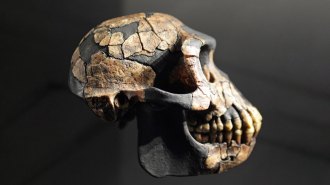 Anthropology
AnthropologyArdi may have been more chimplike than initially thought — or not
A contested study of hand and foot fossils suggests this 4.4-million-year-old hominid was a tree climber and branch swinger.
By Bruce Bower -
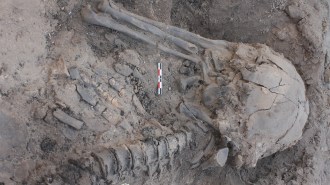 Anthropology
AnthropologyA body burned inside a hut 20,000 years ago signaled shifting views of death
Ancient hunter-gatherers burned a hut in which they had placed a dead woman, suggesting a change in how death was viewed.
By Bruce Bower -
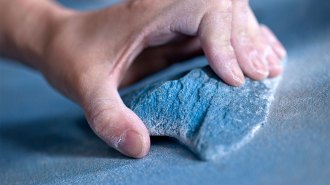 Anthropology
AnthropologyHumanlike thumb dexterity may date back as far as 2 million years ago
A computer analysis suggests early Homo species developed a powerful grip, giving them an evolutionary edge over some other tool-using hominids.
By Bruce Bower -
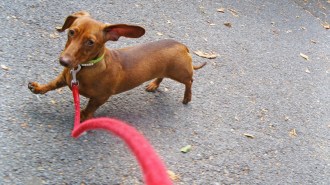 Anthropology
AnthropologyIce Age hunters’ leftovers may have fueled dog domestication
Ancient people tamed wolves by feeding them surplus game, researchers suggest.
By Bruce Bower -
 Genetics
GeneticsPlague may have caused die-offs of ancient Siberians
DNA suggests that the deadly bacterium that causes the plague reached northeast Asia by 4,400 years ago.
By Bruce Bower -
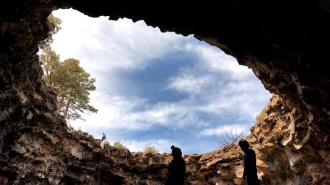 Archaeology
ArchaeologyAncient people may have survived desert droughts by melting ice in lava tubes
Bands of charcoal from fires lit long ago, found in an ice core from a New Mexico cave, correspond to five periods of drought over 800 years.
-
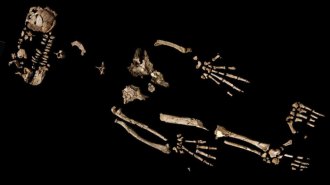 Anthropology
AnthropologyArdi and her discoverers shake up hominid evolution in ‘Fossil Men’
A new book covers the big personalities, field exploits and scientific clashes behind the discovery of the hominid skeleton nicknamed Ardi.
By Bruce Bower -
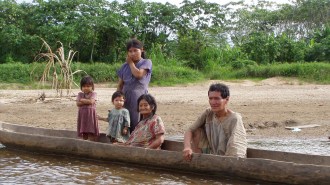 Anthropology
AnthropologyBolivia’s Tsimane people’s average body temperature fell half a degree in 16 years
A new study echoes other research suggesting that people’s average body temperature is lower today than it used to be.
By Sujata Gupta -
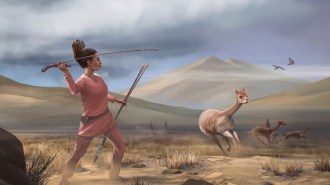 Anthropology
AnthropologyFemale big-game hunters may have been surprisingly common in the ancient Americas
A Peruvian burial that indicates that women speared large prey as early as 9,000 years ago sheds new light on gender roles of ancient hunter-gatherers.
By Bruce Bower -
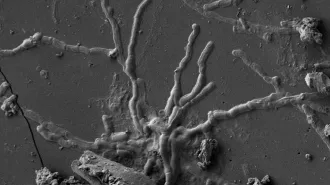 Anthropology
AnthropologyThese human nerve cell tendrils turned to glass nearly 2,000 years ago
Part of a young man’s brain was preserved in A.D. 79 by hot ash from Mount Vesuvius’ eruption.
-
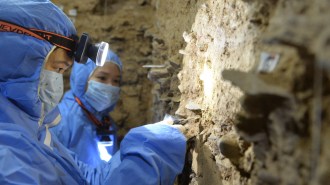 Anthropology
AnthropologyThe first Denisovan DNA outside Siberia unveils a long stint on the roof of the world
Genetic evidence puts Denisovans, humankind’s now-extinct cousins, on the Tibetan Plateau from 100,000 to at least 60,000 years ago.
By Bruce Bower -
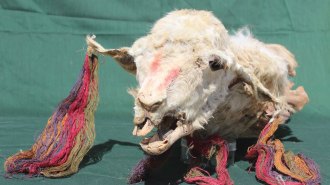 Anthropology
AnthropologyMummified llamas yield new insights into Inca ritual sacrifices
Bound and decorated llamas, found at an Inca site in southern Peru, may have been buried alive as part of events in annexed territories.
By Bruce Bower